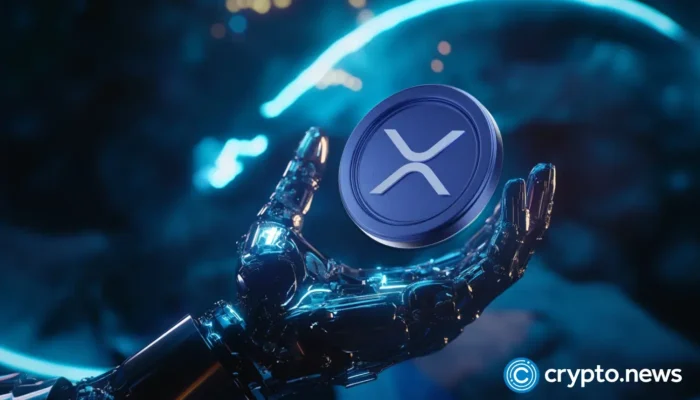If you buy something using links in our stories, we may earn a commission. Learn more.
Most people don’t associate Skullcandy—known for its plasticky skull-and-crossbones aesthetic—with premium audio. Skullcandy admitted as much at a launch event this week in New York City. Since its inception in 2003, it has aimed at (and impressively captured) the wallets of cash-strapped suburban punks across America with low prices, punchy colors, heavy bass, and skulls.
That’s why its new $100 noise-canceling headphones are both exciting and ironic—they’re made in collaboration with Bose, a company known best as the business-class choice for the parents of Skullcandy kids. The Method 360 ANC offer similar noise canceling to the Bose QuietComfort Ultra in a similar design, but with a larger charging case (good for 32 hours of battery life with ANC on) and slightly larger earbuds. It’s a “we’ll dumb this down for Junior” approach that I’d love to see employed more in affordable products.
Photograph: Julian Chokkattu
In my limited time with the headphones so far, I’ve been impressed with the noise canceling and audio quality, even with stiff competition from Google, JLab, and others in the sub-$100 space. They have multipoint pairing and a nine-hour battery life with ANC on, which is excellent for a full day of work. The one downside? Putting the buds back in the charging case is a bit of a pain at first—for whatever reason, they snap magnetically into the case upside down. That’s not much of a deal-breaker to me, and I look forward to more testing before our upcoming review.
Alongside the Method 360 ANC, available now for $100, the company unveiled several other new audio products at its NYC event set to arrive throughout the year, from the Crusher 540 Active workout headphones to the revived Aviator 900 ANC and open-earbud Push 720 Open. Oh, and Tony Hawk was there—he’s the brand ambassador for the new Method 360. —Parker Hall
A Keyboard That Won’t Let You Force Quit
Photograph: Atomic Keyboard
If you’ve ever longed to join the Macrodata Refinement team at Lumon Industries, you’ll be excited to hear that Atomic Keyboard has unveiled a real-life limited edition Severance keyboard. Called the MDR Dasher, this mechanical keyboard is modeled after the Data General Dasher 200 terminal from the late ‘70s, the same unit that inspired the show’s production design team.
There’s no Escape, Control, or Option keys—because, well, there is no escape. It’s a cold grid of 73 chunky keys with a 70 percent keyboard layout. The bulky, aluminum case is dressed in shades of industrial blue, with an off-white frame that looks like it’s been sitting in a forgotten department since the ’80s. Instead of a mouse pad, there’s a tactile trackball beside a cross-shaped directional pad.
There’s no practical need for a keyboard like this in 2025, but it’s a cheeky collector’s item for fans of the Apple TV+ series. The MDR Dasher will be compatible with macOS, Windows, and Linux via USB-C. Atomic Keyboard isn’t clear on the price yet (it says $399, but the price is crossed off, and it notes that final pricing is to be determined), and there’s no release date, but you can sign up for email alerts on its site. —Boutayna Chokrane
Apple Will Train Its AI on User Data
Photograph: Julian Chokkattu
This week, Apple says it will begin analyzing user data to improve its artificial intelligence models, a move widely seen as a means for the company to catch up to rivals like OpenAI and Google. Instead of relying on synthetic training models, Apple will use anonymized customer data to check the work of its synthetic data and improve it. The data is aggregated, so Apple isn’t collecting emails or texts but instead tracking “trends in real user data” to compare with results from synthetic data. It only applies to users who have opted in to Device Analytics and will roll out in iOS 18.5, iPadOS 18.5, and macOS 15.5.
This will upgrade the quality of artificial-intelligence text-generation features like Writing Tools and summarizations, though it’s unclear how quickly we’ll see improvements. Apple’s new-and-improved Siri was supposed to be here by now—a part of the broader Apple Intelligence rollout—but instead we’re left with a marginally souped-up Siri that can tap into OpenAI’s ChatGPT. That’s about it. A few weeks ago, the company delayed the version of Siri it promised last year, one that can understand your personal context. It’s now expected to arrive in 2026.
A Laser-Powered Skin-Care Tool Arrives in the US
Photograph: Lima
The Lyma Laser Pro has officially launched in the US this week for a cool $5,995. First released in Europe last year, the at-home, FDA-cleared skin-care tool has racked up a wait list of over 16,000 Americans, which the company says translates to more than $100 million in sales.
What does it do? The Laser Pro uses near-infrared cold laser technology to boost collagen production to address wrinkles, cellulite, redness, scarring, hyperpigmentation, and post-surgical recovery. Triple the size and power of the original Lyma Laser, the Pro delivers a continuous 808-nanometer laser beam at 1,450 milliwatts—deep enough to penetrate 10 centimeters into the dermis. Lyma claims visible results in 30 days if you stick to three minutes a day. What’s more fascinating is that, unlike LED light therapy, this laser works over sun protection factor (SPF) or makeup without (supposedly) losing efficacy. I’m currently testing it—stay tuned for the full review. —Boutayna Chokrane
Comcast Has a Price-Lock Guarantee
A few weeks ago, Verizon announced a three-year price lock for customers, citing rising prices in a challenging economic climate. Now, Comcast is following suit. This week, the company announced a five-year price guarantee if you subscribe to a new Xfinity Internet package, which includes a Wi-Fi router/modem and unlimited data, starting at $55 per month and going up to $105 depending on the plan. That also includes a free Xfinity Mobile line for one year. Comcast claims there’s no annual contract, so you’re free to cancel it at any time with no penalty.
Like all of these price lock initiatives, there are caveats. It applies only to new residential customers, and you’re limited to 400 Mbps internet. You have to enroll in paperless billing and autopay or you’ll pay extra, and there could be equipment-installation and other fees. If you downgrade the service, regular rates will apply. The promotion ends June 23.
Beats Now Makes USB-C Cables
Photograph: Beats
Beats is getting into the cable business. Announced this week, the Apple-owned brand is launching Beats Cables, including USB-A to USB-C, USB-C to USB-C, and USB-C to Lightning varieties. The reinforced cables come in a 20-cm size in Bolt Black (AKA black) as well as 1.5 meters in signature Beats colors like Surge Stone, Nitro Navy, and Rapid Red (available this summer). The stylish cables provide data transfer at USB 2.0 rates and fast charging at up to 60 watts for the USB-C version, or 15 watts for the USB-A to USB-C cable. They’re available now at Beats’ site and Apple’s site and stores, starting at $19 for a single or $35 for a two-pack. —Ryan Waniata



